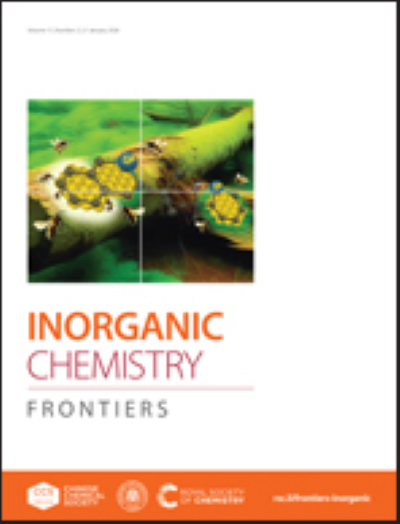作为水裂解催化剂的高熵合金和氧化物:合成、表征、应用与展望
IF 6.1
1区 化学
Q1 CHEMISTRY, INORGANIC & NUCLEAR
引用次数: 0
摘要
高熵材料(HEMs)由于其独特的电子结构、优异的催化性能和优异的电化学稳定性,被认为是在水分解和燃料电池等应用中有前景的催化剂,强调了其在电催化方面的潜力。鉴于hem作为电催化剂的巨大发展潜力和良好的应用前景,该领域的研究正在迅速扩大。然而,尽管有许多创新进展,但对hem作为电催化剂的全面总结仍然缺乏。本文综述了薄膜材料的合成、表征及其在电催化中的应用。从干法合成、湿法合成和快速能量合成三个方面讨论了高熵催化剂的合成。随后,讨论了先进表征技术的应用,以及电子结构分析和DFT计算,以评估高熵催化剂。此外,我们总结了这些催化剂在电催化中的应用,主要集中在析氢、析氧和氧还原方面。最后,对综述内容进行了总结,并就机理研究、材料合成、应用及未来发展前景等方面提出了自己的见解,以期对今后这些材料的合成和应用提供有价值的建议。本文章由计算机程序翻译,如有差异,请以英文原文为准。
High-Entropy Alloys and Oxides as Catalysts for Water-Splitting: Synthesis, Characterization, Applications and Prospect
High-entropy materials (HEMs), due to their exceptional physicochemical performance, which includes a unique electronic structure, outstanding catalytic performance, and remarkable electrochemical stability, are considered as promising catalysts for applications such as water-splitting and fuel cells, underscoring their potential in electrocatalysis. Given the significant potential of development and promising future of applications for HEMs as electrocatalysts, research in this field is rapidly expanding. However, despite numerous innovative advancements, comprehensive summaries on HEMs as electrocatalysts still lacking. This review summarizes the synthesis, characterization, and applications of HEMs in electrocatalysis. We discussed the synthesis of high-entropy catalysts from three perspectives: dry synthesis, wet synthesis, and rapid energy-based synthesis. Subsequently, the employment of advanced characterization techniques is discussed, along with electronic structure analysis and DFT calculations, to evaluate the high-entropy catalysts. Additionally, we summarized the exploration of the applications of these catalysts in electrocatalysis, focusing primarily on hydrogen evolution, oxygen evolution, and oxygen reduction. Finally, we provided a summary of the review's contents and present insights on mechanism research, material synthesis, applications, and future development prospects, with the goal of offering valuable suggestions for the future synthesis and applications of these.
求助全文
通过发布文献求助,成功后即可免费获取论文全文。
去求助
来源期刊

Inorganic Chemistry Frontiers
CHEMISTRY, INORGANIC & NUCLEAR-
CiteScore
10.40
自引率
7.10%
发文量
587
审稿时长
1.2 months
期刊介绍:
The international, high quality journal for interdisciplinary research between inorganic chemistry and related subjects
 求助内容:
求助内容: 应助结果提醒方式:
应助结果提醒方式:


